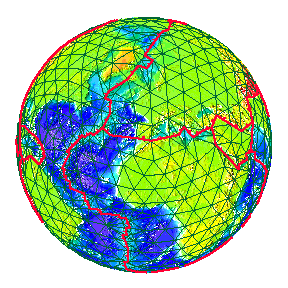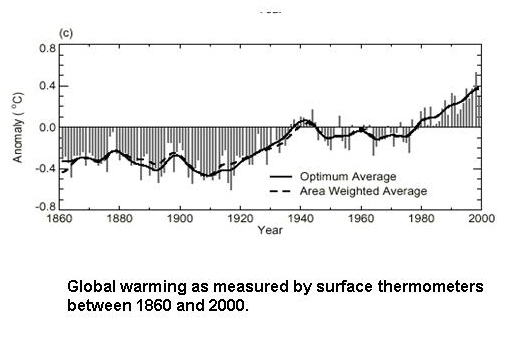 The whole Earth is a descendant of explosive stars.
The whole Earth is a descendant of explosive stars. The whole Earth is a descendant of explosive stars.
The whole Earth is a descendant of explosive stars.
"we live in a makeshift home with limited tenancy. It was more than a hundred million years in the making, and it is due to be destroyed by fire in a few billion years, . . . the only known domicile for life." 1
Our planet is in annual orbit about the sun and also spins about on its axis every day. "Earth's orbit changes in three major ways. Over 100,000 years Earth's orbit goes from the shape of an oval to a more circular pattern. During 41,000 years Earth rocks back and forth about 2 degrees. and in the course of 19,000 years Earth's tilt wobbles like a top."
Shubin, (2013) pp. 166-167.
natural | stellar fusion | artificial pollution | measure of carbon dioxide | Keeling curve of evidence | air temperature | sources | links
Natural circumstances account for observed periodically occurring changes we witness on Earth: daily, biweekly, monthly, and seasonally.
The seasonal variations on the Earth's surface are created by the twenty-three and one half degree tangent of its rotational axis (a line extending between the twin poles) to the orbital plane about the sun. Said another way, the axis of the planet's rotation is on an angle to the direction of its revolution around the sun. "The seasons aren't generated by the rocking back and forth; they derive from the planet having a constant tilt as it revolves around the sun."
"Like a slowing top, Earth spins slower and slower with each passing moment, making days longer now than in the past. As the planet rotates, the water in the oceans moves about and serves to brake the spin of the planet. That is why today is .05 milliseconds longer than yesterday."
Shubin, (2013) pp. 62-63.
natural | stellar fusion | artificial pollution | measure of carbon dioxide | Keeling curve of evidence | air temperature | sources | links
"Gaia to the Greeks, Terra or Tellus to the Romans, the only known domicile of life, not exactly spherical arrangement of metal, mineral, gas and water with a molten core, a viscous mantle and a hard but shifting crust." 2
"As a star consumes all of the lighter elements, and marches ever higher in the periodic table in the fuels it consumes, iron accumulates in the center. As more and more iron accumulates the fuel for fusion is consumed, nuclear fusion reactions cease, and the star begins to emit less heat. . . . With so much energy released only to be absorbed, these conditions can set off a massive chain reaction that ends in a vast and catastrophic explosion."
Shubin, (2013) p. 32.
 "The blast of a supernova spreads atoms of the dead star across the galaxies. Supernovae are one engine that powers the movement of atoms from one solar system to another."
"The blast of a supernova spreads atoms of the dead star across the galaxies. Supernovae are one engine that powers the movement of atoms from one solar system to another."
"The particles that make us have travelled billions of years across the universe; long after we and our planet are gone, they will be parts of other worlds."
Shubin, (2013) pp. 32-33.
natural | stellar fusion | artificial pollution | measure of carbon dioxide | Keeling curve of evidence | air temperature | sources | links
Although naturally recurring cycles can alter the Earth, this entire planet is being changed far more rapidly by human air pollution, with crucially productive regions altered by water pollution. The acceleration of the rate of pollution and subsequent decline of productive areas has been accompanied by large increases in population and a consequent decline in the amount per capita of arable land.
The synergy of these threats involves how air pollution influences ocean acidification and temperatures to the extent which has led many scientists to argue we have a crucial population problem that will be with us for a generation or more. That is because our rates of consumption are accelerating at two to three times faster than these human increases in population. As the population rises that increased rate is only half the rate at which people consume water and one third of the rate at which electricity users consume energy.{3}
natural | stellar fusion | artificial pollution | measure of carbon dioxide | Keeling curve of evidence | air temperature | sources | links
Earth station: Mauna Loa mountain top
The graph below displays a 44 year measurement of carbon dioxide.
The amount of carbon dioxide underwent a 60 percent increase in forty-eight years over the base year of 1958, but recently the rise is accelerating.
1.36% average yearly increase over four decades.
earth change monitoring | long term monitoring | close to home | Do you know your Earth?
Charles David Keeling, noted JIMO researcher, was awarded the National Medal of Science in a White House presentation on 13 June 2002 for his lifetime achievement in scientific research. His significant studies of the carbon cycle and the increase of atmospheric Carbon dioxide, or CO2, have been a pivotal marker in the study of global climate change. Keeling's scientific contributions have affected the scientific, economic and social challenges which confront us today and well into the future.
Keeling was the first to model the accumulation of atmospheric carbon dioxide.
The "Keeling curve" (Figure) encapsulates 45 years of time of series measurements of atmospheric carbon dioxide
taken atop Mauna Loa, Hawaii. His data confirmed that the increased accumulation of carbon dioxide
produced by burning fossil fuels and other industrial products, contributed to the greenhouse effect. Under Keeling's
current JIMO research, which is a continuum of his lifetime study of the global carbon cycle, he is
developing measurement techniques in analyzing relative abundance of Argon to Nitrogen oxide, called "[ Ar / N2 ] ratios."
natural | stellar fusion | artificial pollution | measure of carbon dioxide | Keeling curve of evidence | air temperature | sources | links
The current estimate in 2012 showed the largest increase in carbon emissions ever projected as a six percent rise over the previous year, despite a global depression in the US and Europe.
The "Keeling Curve" confirms a steady increase in carbon dioxide levels contributing to the greenhouse effect. Critics charge that such a relation between carbon and temperature is inverted, that is carbon increase is lagging indicator and not a leading indicator of warmer temperatures. By that the climate skeptics argue that rising temperatures lead to higher carbon dioxide and water vapor levels. Instead of carbon dioxide triggering a rise in temperatures, these skeptics argue that the build-up of carbon dioxide is due to temperature rising.
 Temperature anomalies at the surface of the Earth.
Temperature anomalies at the surface of the Earth.

Besides his interests in atmospheric chemistry and geochemistry, his comprehensive
study of the effects of tidal mixing on climate change spans a 1,000-year period. According to Keeling, strong
oceanic tides are the engines behind the warming-cooling cycle that may help determine future climate change.
Born in Scranton, Pennsylvania, Keeling received his B. A. degree in chemistry
from the University of Illinois in 1948 and a Ph.D. in chemistry from Northwestern University in 1954. Keeling
joined the Scripps Institution of Oceanography in 1956. He is a fellow of the American Academy of Arts and Sciences,
the American Geophysical Union, the American Association for the Advancement of Sciences, and the National
Academy of Sciences.
natural | stellar fusion | artificial pollution | measure of carbon dioxide | Keeling curve of evidence | air temperature | sources | links
1.& 2. Tim Radford, The Address Book: Our Place in the Scheme of Things. London: The Fourth Estate, 2011. p. 139.
3. These different rates all mean that the population rate of increase is two percent per year, then the water consumption is double the rate of population increase and that energy use in industrialized nations is three times that of the population. The argument that either population drives consumption or that consumption is driving irreparable damages on the Earth is meaningless since both population and consumption together are inseparable in many nations.
Anne & Paul Ehrlich, The Dominant Animal. pages, 168-170.
- Prairie types in North America as an example of anticipated responses due to loss of soil moisture, irregular precipitation, and temperature changes since the retreat of the last ice age 10,000 years ago.
- "The fine-grained view of climate and ice reveals surprises. Earth's climate during the past
100,000 years has swung wildly on occasion. The ice ages weren't just long invariant cold periods: glacial periods have witnessed warm intervals, and warm intervals have seen glacial conditions. The emerging picture is that Earth's climate depends on the heat balance of the planet–the amount of heat coming from the sun minus the heat that escapes into space–and the ways that heat is transferred among the oceans, land, air, and ice."
- "Climate at the end of the last glacial period, about 12,500 years ago, exemplifies one of the" peculiarities. "At this time, when by all accounts things should have continued to warm, there was a dramatic shift to a sharp cold spell that happened in the blink of an eye in geological terms–over decades."
- "The record from pollen, oxygen atoms, and other markers implies a climate that converted from warm to cold . . . changed 15 degrees in as little as a decade."
". . . the prospect of a 15 degree shift is staggering. Yet that is the kind of change that has taken place during the history of our species."Shubin, (2013), pp. 173-174.
4. Natural information about the Earth's origins and orbital behavior.
Neil Shubin, The Universe Within: The Deep History of the Human Body, New York: Vintage Books, 2013.
http://astro.wsu.edu/worthey/earth/html/md-climate.html
Hadley Centre, U. K.
Preston Cloud, Cosmos, Earth and Man.
natural | stellar fusion | artificial pollution | measure of carbon dioxide | Keeling curve of evidence | air temperature | sources | links